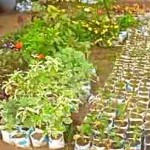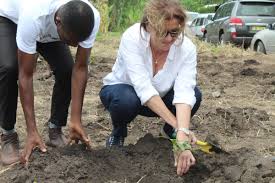 Lilongwe – The marketing of horticultural crops such as bananas and mangoes can heavily contribute to the economic growth of Malawi, Mozambique and Zambia, a joint report by the International Institute of Tropical Agriculture and the Horticulture Research and Development Network for Southern Africa has established. The research findings indicate that bananas and mangoes are important crops in the Chinyanja Triangle comprising of some parts of the three countries not only as cash crops but also for food security. The banana and mango value chains in these countries comprise a number of key participants such as farmers, traders, processors and consumers. “If marketing of these commodities is enhanced, they can contribute greatly to economic growth especially at micro-level such as at household level in rural areas,” says the report.
Lilongwe – The marketing of horticultural crops such as bananas and mangoes can heavily contribute to the economic growth of Malawi, Mozambique and Zambia, a joint report by the International Institute of Tropical Agriculture and the Horticulture Research and Development Network for Southern Africa has established. The research findings indicate that bananas and mangoes are important crops in the Chinyanja Triangle comprising of some parts of the three countries not only as cash crops but also for food security. The banana and mango value chains in these countries comprise a number of key participants such as farmers, traders, processors and consumers. “If marketing of these commodities is enhanced, they can contribute greatly to economic growth especially at micro-level such as at household level in rural areas,” says the report.
However the report shows that despite the level of awareness among farmers that bananas and mangoes can be processed into different high value products, there is effectively no processing of the two commodities in the three countries. “The limited processing activities observed in Malawi especially for sun dried and solar dried mangoes operate on very limited capacity targeting a small niche market within urban centres,” says the report adding that lack of processing technologies as well as knowledge in banana and mango processing and expensive processing technologies were the predominant setbacks hindering value adding. It notes that marketing of the horticultural crops is informal, highly unorganized and face a number of constraints including lack of appropriate and hygienic marketing facilities, inadequate access to market information, lack of coordination and lack of effective links to high value markets such as supermarkets and institutions and high class tourist centres such as hotels. According to FAO, the area under banana production in Malawi has stagnated at around 18, 000ha since 1990.
Similarly FAO observes that the area under banana production has not changed much over the past two decades in Mozambique and Zambia. The area under banana production in Mozambique is estimated at 14, 440ha while in Zambia it was estimated at about 220ha in 2006. Anecdotal reports also indicate that mango production is almost stagnant as there are no new trees being planted, the report says. While more resources have been channeled into the development and improvement of cereal grains ever since the start of the “Green Revolution” in the 1950s, worldwide per capita supply of fruits and vegetables has steadily increased since 1960, notes the World Vegetable Centre. The Centre points out that farmers around the world have continued to diversify into horticultural crop production to the point that worldwide production of horticultural crops has grown faster than that of most cereal crops such as rice, wheat and maize. “Despite the global increase in the supply of fruits and vegetables, the per capita availability has been uneven,” says the report indicating that the annual availability of horticultural crops is highest in the developed world estimated at about 200kg per capita while the developing countries, particularly in Sub-Saharan Africa the per capita annual supply of fruits and vegetables has been about 106kg. However, the report notes that the fruit and vegetable exports can benefit from the declining total exports of major tropical commodities such as coffee, tobacco, cotton, sugar, rubber, tea and cocoa.




No comments! Be the first commenter?